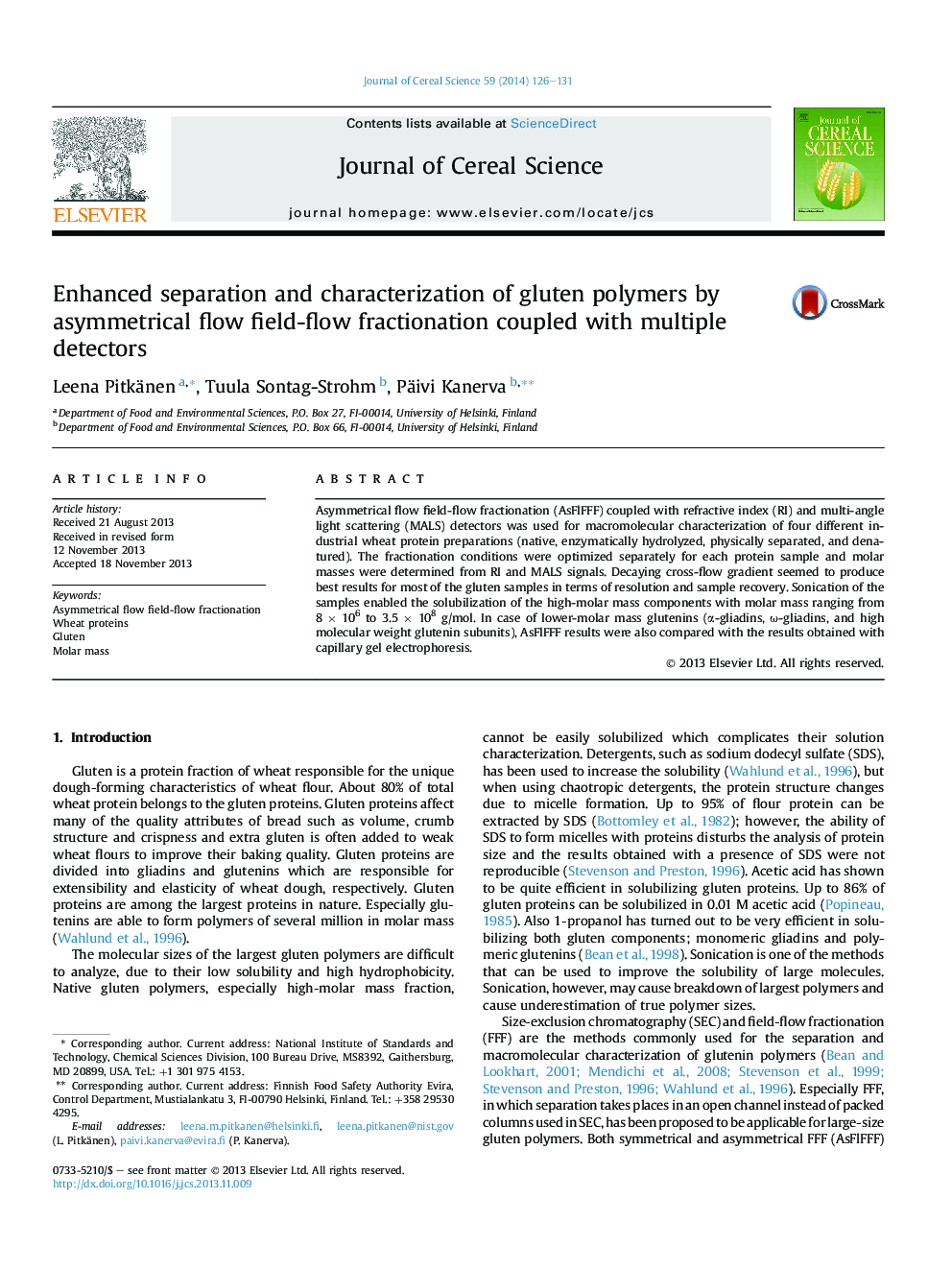| Article ID | Journal | Published Year | Pages | File Type |
|---|---|---|---|---|
| 6378024 | Journal of Cereal Science | 2014 | 6 Pages |
â¢Asymmetric flow field-flow fractionation (AsFlFFF) was used for characterization of gluten.â¢Sonication allowed dissolution of high-molar mass gluten polymers.â¢AsFlFFF condition was optimized in respect of sample recovery.â¢AsFlFFF and capillary gel electrophoresis offered complementary information on gluten.
Asymmetrical flow field-flow fractionation (AsFlFFF) coupled with refractive index (RI) and multi-angle light scattering (MALS) detectors was used for macromolecular characterization of four different industrial wheat protein preparations (native, enzymatically hydrolyzed, physically separated, and denatured). The fractionation conditions were optimized separately for each protein sample and molar masses were determined from RI and MALS signals. Decaying cross-flow gradient seemed to produce best results for most of the gluten samples in terms of resolution and sample recovery. Sonication of the samples enabled the solubilization of the high-molar mass components with molar mass ranging from 8 Ã 106 to 3.5 Ã 108 g/mol. In case of lower-molar mass glutenins (α-gliadins, Ï-gliadins, and high molecular weight glutenin subunits), AsFlFFF results were also compared with the results obtained with capillary gel electrophoresis.
